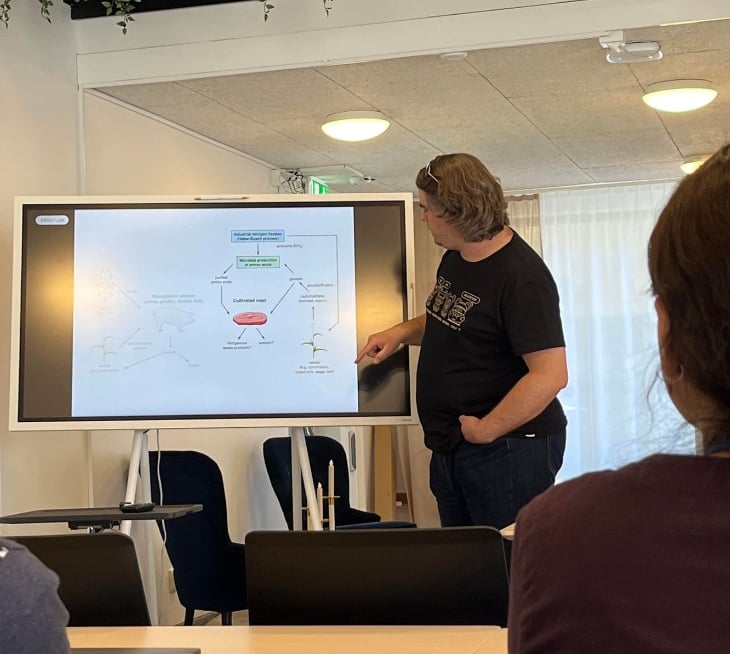“Beyond Agriculture: Edible Microorganisms and the Next Revolution in Food Production”

Have you ever wondered if there's a way to produce food that not only mitigates climate change but also helps prevent it? Microorganisms might be a key part of the solution. On the 21st of May 2024, Tomas Linder of the Department of Molecular Science at Sweden’s Agricultural University presented his work to KTH FOOD faculty and other interested guests. The presentation focused on how microorganisms can be used as a food source, and their potential for creating a more sustainable food system.
Why is this important?
“Agriculture has allowed humanity to grow and create complex societies” Linder began. Since then, humanity has constantly been looking for ways to produce more food, securing our food supplies and our lives on this planet. The question is then: what next?
The lecture highlighted that our food systems are threatned. Being greatly reliant on natural resources that can be affected by climate change- and many other vulnerabilities- solutions are needed to create a sustainable and resilient food system that will take us into the next phase of agriculture. From the lecture, it became evident that using microorganisms to produce food is a step that could potentially help to avert climate change, as well as help to mitigate it.
Linder suggested that the benefits of using microorganisms as a food source is that humanity will be able to produce as much food as we want, and the geographical burdens of conventional agriculture practices will be greatly diminished. Furthermore, because microorganisms are grown in bioreactors, humanity will have a food supply that is no longer reliant on the climate and the conditions needed for farming.
Issues ahead
Microorganisms are a possible solution to the pressures that face our food systems, yet they face issues that were made evident during the lecture. Firstly, consumer habits drive the market and thus the ability to fund the production of these products. Without consumer demand, using microorganisms as food will be limited. Profitability is a major part of getting businesses focusing on producing microorganism-based food products into the market.
What can you do?
Each individual can play a part in supporting microorganisms in the food industry, and silmuntanelously decrease their carbon footprint. The solution? To replace meat with products made using microorganisms such as Quorn. Linder suggested using a 50/50 ratio of meat and microorganism-based protein next time you make bolognese. Alternatively, using 1/3 microorganism protein and 2/3 meat next time you make Swedish meatballs.
Final sentiments
The final sentiments of the lecture perpetuated the idea that microorganism-based food products are a part of the solution, reducing our reliance on land for agriculture, and helping to produce food that is only limited by our ability to supply energy to the bioreactors. Microorganisms can help turn recources such as wood, into edible food that humans can consume. The possibilties seem endless, and at the end of the day, any solution that promises so much is worth entertaining.
